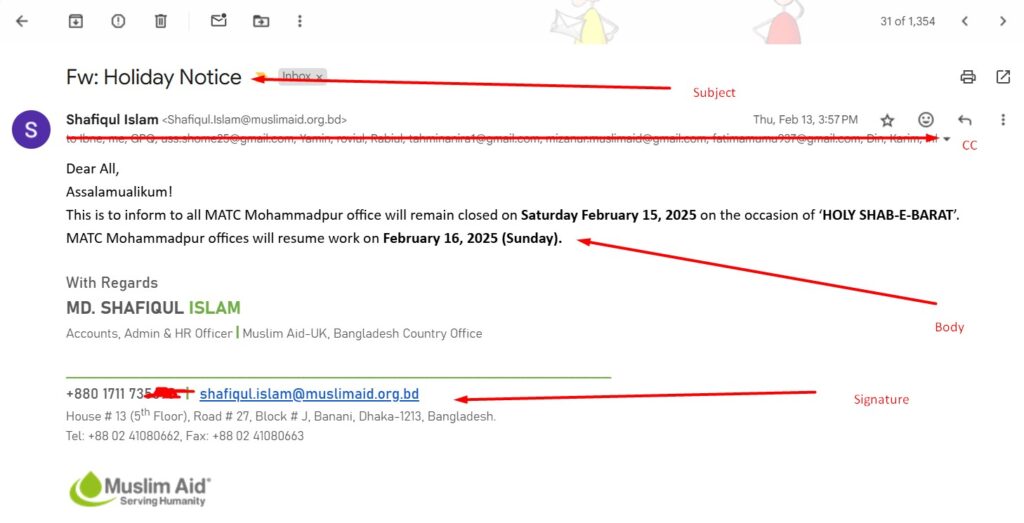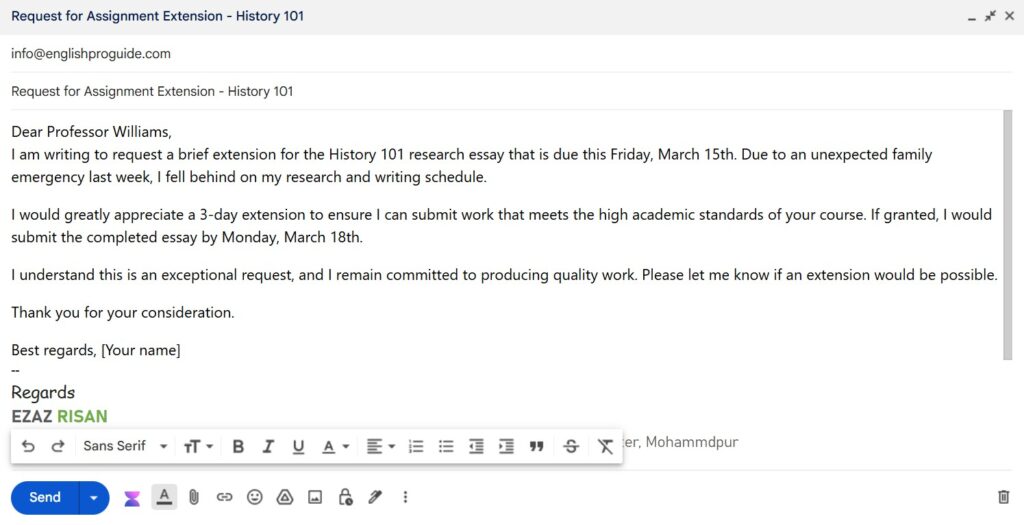How to Write Formal Emails in English (Work and School)
Writing formal emails can feel intimidating, especially if English isn’t your first language. But don’t worry—with the right structure and tone, crafting a professional email is much easier than you think.
Whether you’re reaching out to a professor or sending a job application, this guide will help you write clear, polite, and effective emails for work and school.
Why Formal Emails Matter?

Formal emails create a great first impression and show respect towards the reader. They’re professional, organized, and get your message across without confusion.
With this guide, you’ll learn the key steps to write emails that leave a positive impression.
Step-by-Step Guide to Writing a Formal Email

1. Start with a Professional Subject Line
The subject line is the first thing your recipient sees. A clear, concise subject helps them understand your email’s purpose right away. Avoid vague phrases like “Important Info” or “Regarding Yesterday.” Instead, write something specific, such as:
- Work Example: Job Application – Marketing Assistant Position
- School Example: Request for Assignment Extension – History 101
2. Use a Polite Greeting
Always address the person respectfully. If you know their name, use it with the correct title (e.g., Mr., Ms., Dr., or Professor). If not, keep it neutral with “Dear [Department/Team]” or “To Whom It May Concern.”
Examples of greetings:
- Dear Dr. Smith,
- Dear Professor Johnson,
- To Whom It May Concern,
3. Start with a Courteous Opening
Begin your email with a polite introduction that explains why you’re writing. Be clear but respectful.
Examples:
- I hope this email finds you well.
- My name is [Your Name], and I am reaching out regarding…
- I am writing to request…
4. Clearly State Your Purpose
The body of your email should clearly explain why you’re contacting the recipient. Keep it straightforward and avoid unnecessary details. Break large chunks of text into smaller paragraphs so it’s easy to read.
Work Example:
I am writing to apply for the Marketing Assistant position advertised on your website. I have attached my resume and cover letter for your review.
School Example:
I would like to kindly request an extension for the History 101 assignment due on [date]. I have been unwell and unable to complete the work by the deadline.
5. Use a Polished and Respectful Tone
Avoid casual language, slang, or emojis in formal email communication. Use polite phrases like “I kindly request,” “Could you please,” or “I appreciate your assistance.”
6. End with a Polite Closing and Call to Action
Wrap up your email with a respectful conclusion. Briefly summarize if necessary and mention any follow-up actions required.
Examples:
- Thank you for considering my application. I look forward to hearing from you.
- I appreciate your time and understanding regarding my request.
7. Add a Professional Sign-Off
End your email by including a formal closing such as “Sincerely,” “Best regards,” or “Thank you,” followed by your name.
Examples:
- Sincerely,
[Your Full Name] - Best regards,
[Your Full Name]
8. Proofread Before Sending
Always double-check your email for spelling, grammar, and tone before hitting “Send.” Even small mistakes can make your email seem careless.
Formal Email Templates
Here are examples of formal email templates for different scenarios. You can customize them based on your specific needs.
Work-Related Template (Job Application)
Subject Line: Job Application – Marketing Assistant Position
Dear [Hiring Manager’s Name],
I hope this message finds you well. My name is [Your Name], and I am excited to apply for the Marketing Assistant position at [Company Name], as advertised on [Job Board/Company Website].
I have attached my resume and cover letter for your consideration. I would love the opportunity to contribute my skills in [specific skill, e.g., social media marketing] to support your team’s goals at [Company Name].
Thank you for taking the time to review my application. I look forward to the possibility of discussing my candidacy further. Feel free to contact me at [your email] or [your phone number].
Sincerely,
[Your Full Name]
Work-Related Template (Meeting Request)
Subject Line: Request for Meeting – Project Update Discussion
Dear [Manager’s Name],
I hope you’re doing well. I am reaching out to schedule a brief meeting to discuss updates on the [specific project name]. I believe a 15-minute discussion would help us align on key deliverables and next steps.
Would you be available on [suggested dates/times]? If not, please feel free to suggest a time that works better for you.
Thank you for your time, and I look forward to your reply.
Best regards,
[Your Full Name]
School-Related Template (Contacting a Professor)
Subject Line: Question About [Course Name/Assignment]
Dear Professor [Last Name],
I hope this email finds you well. My name is [Your Name], and I am a student in your [Course Name] class. I am writing because I have a question regarding [specific topic/assignment].
Specifically, I would appreciate clarification on [describe your question briefly]. If you prefer, I am happy to discuss this further during your office hours or at an alternative time that works for you.
Thank you for your guidance. I look forward to your response.
Sincerely,
[Your Full Name]
School-Related Template (Requesting an Extension)
Subject Line: Request for Assignment Extension – [Course Name]
Dear Professor [Last Name],
I hope you’re doing well. I am reaching out to kindly request an extension for [Assignment Name], currently due on [original deadline]. Unfortunately, [briefly explain your reason, e.g., illness, family emergency], which has impacted my ability to complete the assignment on time.
I understand the importance of meeting deadlines and greatly appreciate your consideration. If possible, an extension until [new proposed deadline] would give me the opportunity to complete the work to the best of my ability.
Thank you for understanding, and I look forward to your response.
Best regards,
[Your Full Name]
Read More: Synonyms & Antonyms: Your Key to Effective Writing
Key Tips for Successful Formal Emails
- Be concise—respect the recipient’s time.
- Always sound polite, even when frustrated.
- Avoid casual abbreviations like “BTW” or “ASAP.”
- Attach any necessary files (resume, documents) before sending.
- Respond to follow-up emails promptly.
Practicing these steps will transform your English emails into polished, professional communication. With a little effort, emailing in formal English will soon feel like second nature!
Start using these tips and templates today, and make your emails stand out. Whether it’s for work or school, you’ll leave a lasting impression with every message you send!






